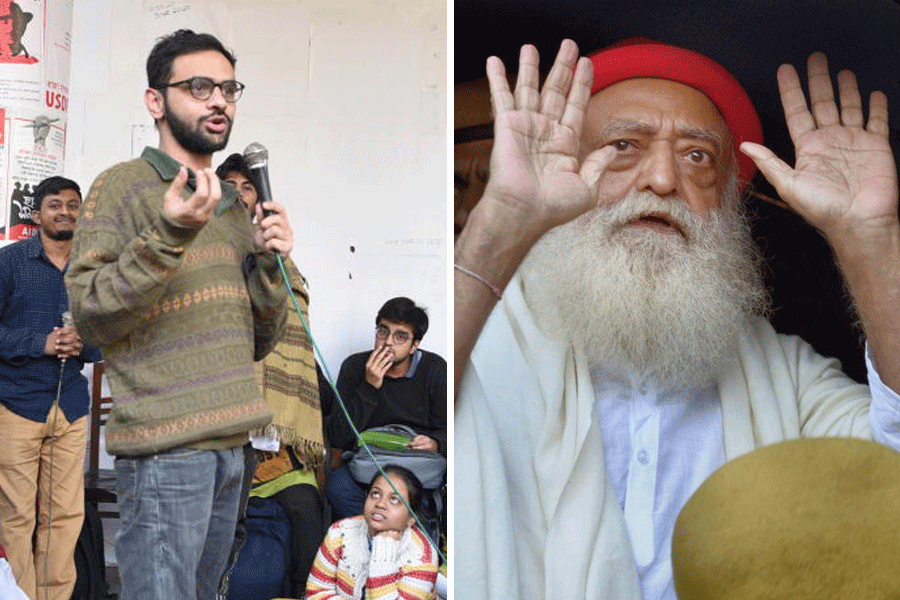Hours after the deadly gas leak on the outskirts of Visakhapatnam, AIIMS director Dr Randeep Guleria told mediapersons that data available suggest no “significant long-term effects as it is metabolised and quickly leaves the system”.
The leak from the LG Polymers plant in the early hours of Thursday snuffed out 11 lives, and hundreds were reportedly admitted in local hospitals. Nearly 1,000 people living close to the factory were directly exposed and undergoing treatment.
As the scale of the tragedy is still to be ascertained by the authorities, top officials assured that the situation around the plant was under control.
AIIMS director Guleria later explained that Styrene is an alkaline benzene compound which can harm humans if they come in contact by inhalation, ingestion or there is contact through eyes and skin.
“It can cause irritation in the throat and can cause coughing, breathing difficulty and wheezing,” said Guleria. He said that prolonged exposure could lead to coma, pulmonary oedema and irregular heartbeat.
“There is no antidote to this compound. But by and large, it is not universally fatal except those with very close exposure. Though a large number are admitted (in the hospitals), most of them are stable,” Guleria added.
The joint media briefing was attended by representatives of National Disaster Response Force (NDRF), National Disaster Management Authority (NDMA) and All India Institute of Medical Sciences (AIIMS).
In a separate statement, the home ministry said the government-mobilised chemical, biological, radiological and nuclear (CBRN) teams from Pune were being deployed at the spot.
NDRF director-general S.N. Pradhan told the media that the gas, Styrene, is heavier than air and dissolves in water. Therefore, water was sprayed in affected areas.
He added that since the impact of the gas lasts for six to seven hours, the effect was wearing off.
According to Pradhan, the gas started leaking from the LG Polymers factory, owned by South Korean electronics giant LG, near the Gopalapatnam neighbourhood, at 2.30am. The local NDRF unit was alerted at 5.45am.
“The local team was there within half an hour. The NDRF first worked to neutralise the situation inside the LG Polymers factory itself. About 200-250 families were evacuated from villages in a radius of 3km of the factory,” said Pradhan.
“Door-to-door searches were conducted by the NDRF. There were some people who were unconscious, while others were semi-conscious; there were some who couldn’t move. There were children, women and elders.”
He said that initially, people who were exposed had complaints of throat and skin irritation and the first response was from local administration and fire services.
Andhra Pradesh chief minister Y.S. Jaganmohan Reddy has pointed a finger at LG Polymers’ security measures, Pradhan said the matter was still under investigation.
On CBRN safety, NDMA member Kamal Kishore said that a detailed guideline had been put out which must be followed. He also said that the Prime Minister had taken stock of the situation after a meeting with the NDMA to chalk out a plan of response.
“The Prime Minister took stock of the situation in the meeting and the resources of the central government that could be deployed not just from the state, but from across the country, and gave directions for their deployment at the earliest,” said Kishore.
In the eye of the storm
LG Polymers India, the company in the spotlight after the gas leak in Visakhapatnam, is a subsidiary of leading South Korean chemical firm LG Chem that had entered India in 1997 through the acquisition of a local company.
The plant manufactures polystyrene (PS) that finds wide utility in the food-service industry as rigid trays and containers, disposable utensils and foam cups, plates and bowls.
The company, according to its website, was established in 1961 as Hindustan Polymers by the Shriram Group for manufacturing PS and its co-polymers.
It was merged with MC Dowell & Co Ltd of UB Group in 1978.
Considering India an important market for its aggressive global growth plans, LG Chem in July 1997 acquired Hindustan Polymers and renamed it LG Polymers India Pvt Ltd (LGPI) in July 1997.
The factory generated 222.8 billion won (USD 181.8 million) in revenue and 6.3 billion won in net profit last year.
In terms of sales, the parent company LG Chem was the 10th largest chemical company in the world in 2017.
LGPI’s Visakhapatnam factory was being prepared to reopen on Thursday after the lockdown when the accident took place. Company workers were preparing to restart the operation when the gas started to leak in the early hours.











